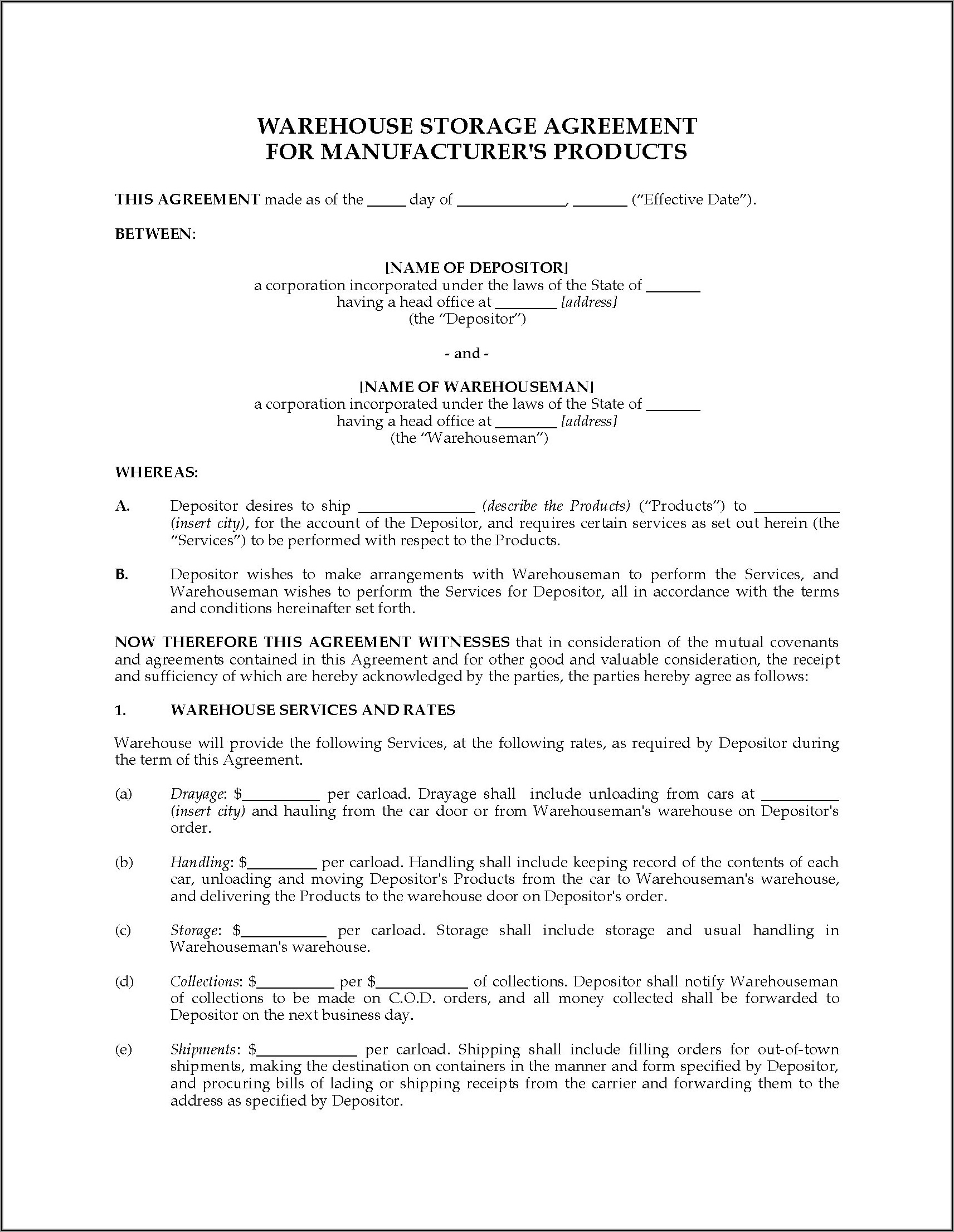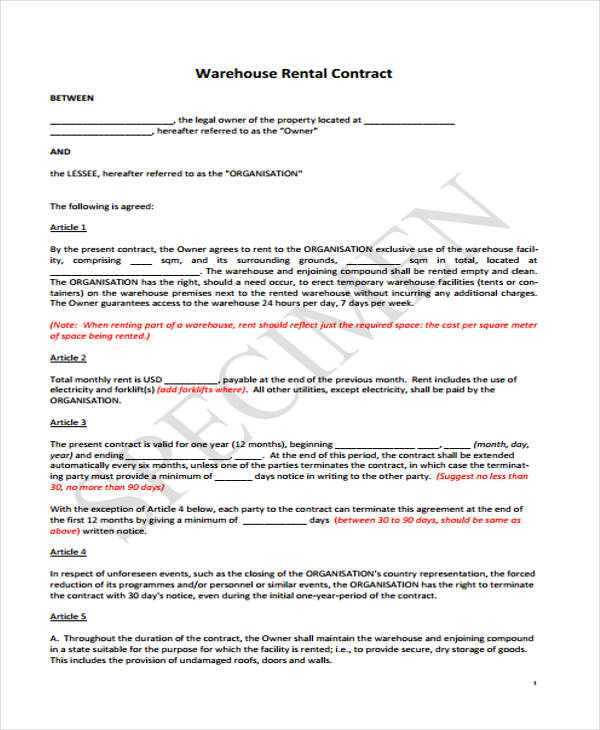
When it comes to leasing a warehouse, having a written agreement in place is essential. A warehouse lease agreement serves as a legally binding contract between the landlord and the tenant, outlining the terms and conditions of the lease. Having a printable warehouse lease agreement not only ensures that both parties are on the same page but also provides a convenient and easily accessible document for reference.
In this article, we will explore everything you need to know about printable warehouse lease agreements. From what they are and why you need one to how to create an effective agreement, we’ve got you covered. So, let’s dive in and explore the world of warehouse lease agreements.
What is a Warehouse Lease Agreement?
A warehouse lease agreement is a document that outlines the terms and conditions of a lease between a landlord and a tenant for the rental of a warehouse space. It includes important details such as the duration of the lease, rental payments, maintenance responsibilities, and any additional provisions or clauses that both parties agree upon.
Having a printable version of the lease agreement allows both the landlord and the tenant to have a physical copy of the document for reference and record-keeping. It ensures that all the terms and conditions are clearly stated and agreed upon, minimizing the risk of misunderstandings or disputes in the future.
Why Should You Use a Printable Warehouse Lease Agreement?
Using a printable warehouse lease agreement offers several benefits for both landlords and tenants. Here are some reasons why you should consider using one:
- Clarity: A written lease agreement provides clarity on the terms and conditions of the lease, ensuring that both parties are aware of their rights and responsibilities.
- Legal Protection: A well-drafted lease agreement protects both the landlord and the tenant from potential disputes and legal issues.
- Record-Keeping: Having a physical copy of the lease agreement allows both parties to keep a record of the terms and conditions, making it easier to refer to in case of any disagreements.
- Flexibility: A printable lease agreement can be customized to meet the specific needs of the landlord and the tenant, including any additional provisions or clauses.




How to Create an Effective Warehouse Lease Agreement
Creating an effective printable warehouse lease agreement involves careful consideration of the terms and conditions that need to be included. Here are some key steps to follow:
1. Gather Relevant Information
Start by gathering all the relevant information about the warehouse and the parties involved. This includes the full names and contact details of the landlord and the tenant, the address of the warehouse, and any specific details about the space being leased.
2. Define the Lease Terms
Clearly define the duration of the lease, including the start and end dates. Specify whether the lease is for a fixed term or on a month-to-month basis. Outline the rental amount, payment schedule, and any additional fees or charges.
3. Maintenance and Repairs
Outline the responsibilities of both parties when it comes to maintenance and repairs. Specify who is responsible for routine maintenance, repairs, and any necessary upgrades or improvements to the warehouse.
4. Security Deposit
Specify the amount of the security deposit required and any conditions for its return at the end of the lease term. Include details about the use of the security deposit, such as covering unpaid rent or damages to the warehouse.
5. Additional Provisions
Consider including any additional provisions or clauses that are relevant to the lease agreement. This may include restrictions on the use of the warehouse, insurance requirements, or any specific rules or regulations that both parties need to adhere to.
6. Sign and Date the Agreement
Once all the terms and conditions have been agreed upon, both parties should sign and date the lease agreement. This signifies their acceptance and understanding of the terms outlined in the document.
Final Words
A printable warehouse lease agreement is an essential document for both landlords and tenants. It provides clarity, legal protection, and record-keeping benefits. By following the steps outlined in this guide, you can create an effective lease agreement that meets the specific needs of both parties. Remember to carefully consider all the terms and conditions to ensure a smooth and successful leasing experience.
Warehouse Lease Agreement Template – PDF